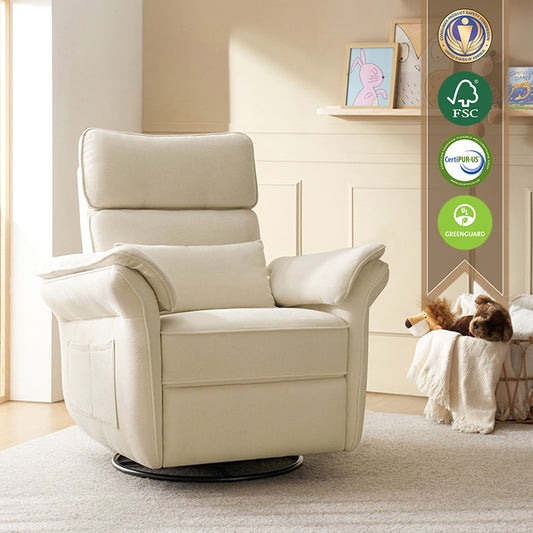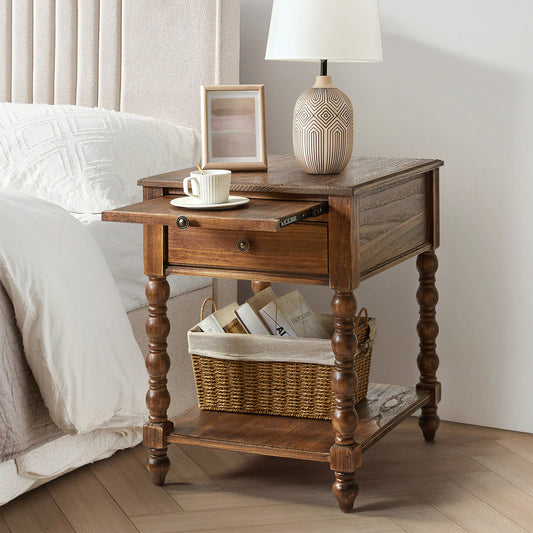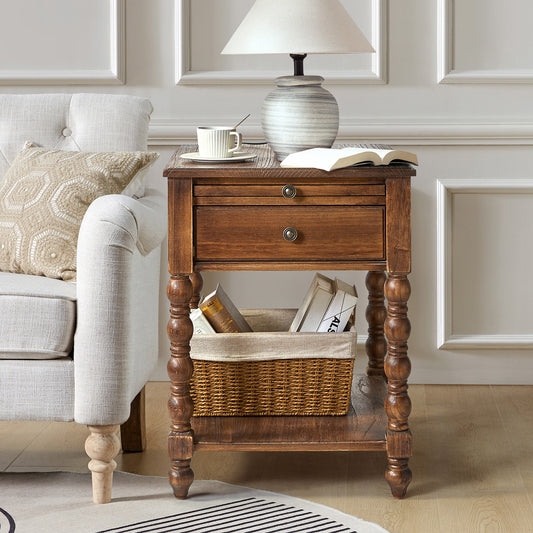Is a Bassinet or Infant Crib Really Necessary?

A newborn baby is like a gentle ray of morning light, arriving in the world with pure, untouched innocence. Their tiny body is as soft as a cloud, their delicate breaths as light as a feather, and their eyes filled with endless curiosity and wonder. The weeks and months after birth mark a sensitive period where the baby is adjusting to a new environment, and the mother remains closely connected. During this time, it's important for mom and baby to share the same space, as it fosters a strong bond between them.
This raises the question: Should the baby co-sleep in the same room or bed-share with the parents? It's a topic that's sparked ongoing debate.


Does a newborn baby need a bassinet?
Since babies are curled up in their mothers' wombs, a smaller, cozy space often provides a sense of security and comfort. For the first 0–3 months, a bassinet is ideal as it’s portable and easy to use, allowing parents to move their baby around or take them in and out with ease. After 3–4 months, babies can gradually transition to sleeping in a crib.


Until what age can a baby sleep in a crib?
Larger cribs are typically suitable for babies to sleep in until around 3 years old. During this stage, babies become more curious and active, often rolling and climbing. As your baby grows, it’s important to keep an eye on their behavior. If you notice your little one frequently climbing or attempting to climb over the crib rails, it may be time to transition them to a toddler bed or convert the crib into one for added safety.
Some parents may feel that cribs don't get much use and take up a lot of space. However, many modern convertible cribs are designed to grow with your child. Not only can they serve as a cozy sleeping space for babies, but they can also be transformed into a desk or other furniture, providing long-lasting functionality.


What are the advantages of having your baby sleep in a crib?
Having your baby sleep in a crib doesn’t mean they must be in a separate room. Placing the infant crib in the parents' bedroom allows you to monitor your baby and respond quickly to any needs or situations.
There are several benefits to using a crib, not only for your baby’s safety and health but also for enhancing the parenting experience. Cribs are designed with infant safety in mind, preventing babies from rolling out or getting hurt. The appropriate rail height ensures they stay safe and secure during sleep. Additionally, sleeping in a baby crib from an early age encourages the development of independent sleep habits, reducing dependence on parents and promoting future self-soothing skills.
Additionally, crib mattresses are typically firmer, providing better support for your baby's spine and promoting healthy bone development. Cribs are also more appropriately sized for babies, offering a safer and more comfortable sleeping environment than adult beds. They also reduce the risk of suffocation or accidental injury that can occur when co-sleeping with parents.
For parents, having the baby sleep in the crib provides more space and time to rest, reducing the chances of disturbing the baby’s sleep at night. This can help alleviate stress and anxiety, while also strengthening the relationship between parents. As the baby grows and eventually needs to be independent, establishing the habit of sleeping in a crib from an early age can ease the separation anxiety for both parents and child. Furthermore, placing the crib in the baby’s designated sleep area helps establish a consistent routine and fosters healthy sleep habits.


Other questions that might cross parents' minds:
1. Can baby sleep in crib with bed cover?
For your baby’s safety, the crib should have a firm, flat surface, especially for newborns and infants up to about one year old. Keep the crib free from pillows, blankets, toys, and other items that could pose a risk. To prevent accidents, consider using a baby sleeping bag for added peace of mind. If you prefer using a blanket, opt for a light, breathable one.
2. Should i put baby crib next to window or door?
Babies should sleep in the same room as their parents but not in the same bed. This means the crib should be in the parents' bedroom, with placement depending on the room’s layout. If the bedroom is spacious, position the crib in a quiet, cozy spot, away from distractions like windows and doors. In smaller bedrooms, placing the crib next to the parents' bed but out of direct reach is a safe and practical solution.
3. How to get baby to sleep in crib?
It takes patience and persistence for both baby and parents to adjust to crib sleeping. First, it’s essential for your baby to feel safe and comfortable in the crib. You can help by allowing your baby to play in the crib with you nearby, listening to music or reading picture books together to create a positive, happy environment. Additionally, encourage your baby to develop the habit of falling asleep independently from an early age, and establish a consistent bedtime routine to gradually reduce any separation anxiety.



























No comments